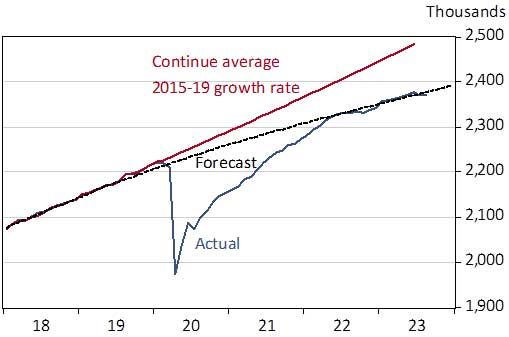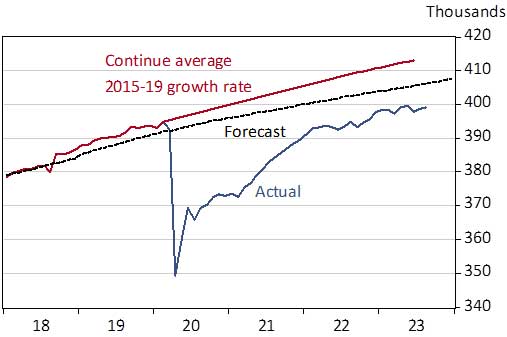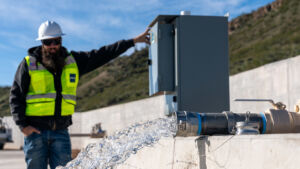Arizona and Phoenix jobs have returned to their pre-pandemic trend.
Arizona added 6,400 seasonally-adjusted jobs in August, up from a revised decline of 200 in July. The initial estimate for July was an increase of 2,700. Gains in August were the largest in four months.
DEEPER DIVE: Arizona unemployment rate is down and wages are up
Construction added 3,500 jobs over the month in August, followed by professional and business services (up 3,100), private education and health services (up 2,400), and financial activities (up 1,500).
Jobs in natural resources and mining were stable over the month.
In contrast, government jobs dropped by 2,300 in August, followed by trade, transportation, and utilities (down 700), manufacturing (down 500), leisure and hospitality (down 300), other services (down 200), and information (down 100).
The unemployment rate in Arizona bounced up to 3.8% in August (seasonally adjusted). That was up from 3.6% in July and matched the U.S. rate.
Arizona jobs rose 56,700 over the year in August, which translated into 1.8% growth. Over-the-year gains were driven by private education and health services, government, leisure and hospitality, construction, and financial activities (Exhibit 1).
Exhibit 1: Arizona Jobs by Industry, Over-the-Year Change, Not Seasonally Adjusted, Thousands
Over-the-year in August, Phoenix MSA jobs were up 45,000 (1.9%) and Tucson MSA jobs were up 2,000 (0.5%). The Flagstaff MSA added 2,200 jobs (3.3%). Jobs in the Prescott MSA rose by 400 (0.6%) and the Lake Havasu-Kingman MSA added 200 (0.4%). In contrast, the Sierra Vista-Douglas MSA lost 500 jobs (-1.5%) and the Yuma MSA lost 400 jobs (-0.7%).
Overall, jobs in Arizona and the Phoenix MSA (Exhibit 2) have returned to their pre-pandemic trend, if we measure that trend by the EBRC forecast generated in January 2020, just before the pandemic struck. This trend is well below average growth during the five years before the pandemic primarily due to the demographic impact of the aging of the baby boom generation.
Exhibit 2: Phoenix MSA Total Nonfarm Jobs Relative to Trend, Seasonally Adjusted, Thousands

In contrast, jobs in the Tucson MSA have not yet regained their prior trend, measured either by the EBRC forecast produced in January 2020 or by the average growth rate during the 2015-2019 period (Exhibit 3). Lagging recovery in professional and business services and private education and health services jobs drove this result.
Exhibit 3: Tucson MSA Total Nonfarm Jobs Relative to Trend, Seasonally Adjusted, Thousands

Author: George W. Hammond, Ph.D., is the director and research professor at the Economic and Business Research Center (EBRC).




